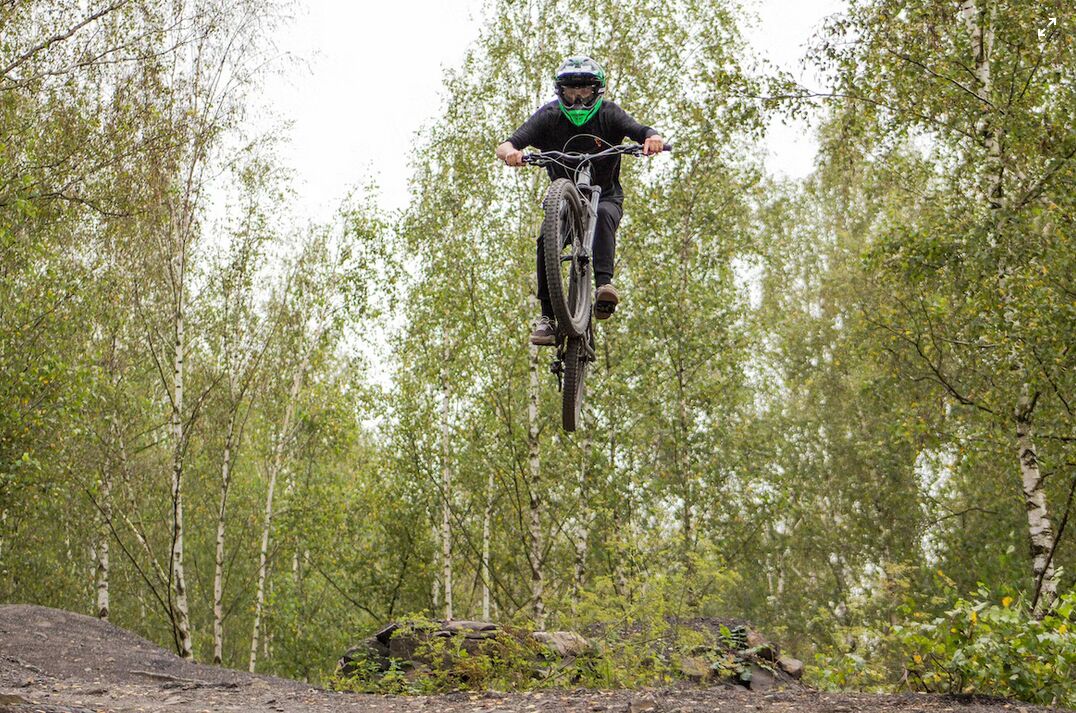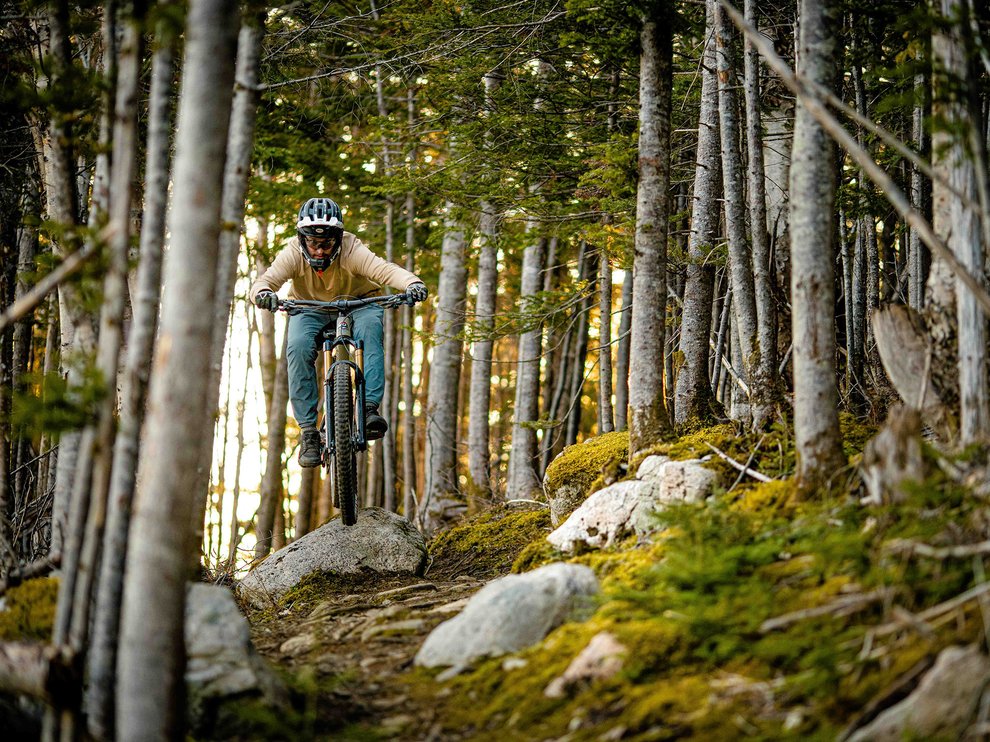Introduction

When it comes to biking, mastering the right techniques is essential for a smooth and enjoyable ride. Whether you’re a beginner or an experienced cyclist, understanding and implementing proper biking techniques can greatly enhance your performance and safety on the road or trail.
In this article, I will guide you through various biking techniques, including proper bike fit, braking techniques, shifting gears, cornering, climbing hills, descending hills, and even jumping and stunts. So, let’s dive in and explore the world of biking techniques!
Proper bike fit

Importance of a proper bike fit
One of the most crucial aspects of biking is ensuring that your bike fits you properly. A bike that is not properly fitted can lead to discomfort, pain, and even injuries. A proper bike fit allows for optimal power transfer, efficient pedaling, and overall comfort during your rides. It also helps prevent strain on your joints and muscles, reducing the risk of overuse injuries.
Adjusting seat height
One key element of a proper bike fit is adjusting the seat height. When your seat is at the correct height, your legs should be almost fully extended at the bottom of the pedal stroke, with a slight bend in your knees. To adjust the seat height, loosen the seat clamp and raise or lower the seat post until you achieve the desired height. Once adjusted, tighten the seat clamp securely.
Adjusting handlebar position
Another important aspect of bike fit is the handlebar position. The handlebars should be positioned in a way that allows you to maintain a comfortable and relaxed riding posture. To adjust the handlebar position, loosen the stem bolts and adjust the stem angle and height accordingly. Experiment with different positions until you find the one that feels most comfortable for you.
Braking techniques

Using both brakes
When it comes to braking, it’s important to use both brakes simultaneously for maximum stopping power and control. Apply even pressure to both the front and rear brakes to avoid skidding or losing control. Remember to modulate the pressure to avoid abrupt stops, especially in wet or slippery conditions.
Applying gradual pressure
To achieve smooth and controlled braking, it’s crucial to apply gradual pressure to the brakes. Sudden and harsh braking can cause your bike to skid or lose balance, increasing the risk of accidents. Gradually increase the pressure on the brakes as you slow down, allowing for a controlled and safe stop.
Braking while turning
When braking while turning, it’s important to be cautious and maintain control. Avoid applying excessive pressure on the brakes, as this can cause your tires to lose traction and result in a loss of control. Instead, brake gently and evenly while keeping your bike upright and your body centered over the bike.
Shifting gears

Understanding gear ratios
Understanding gear ratios is essential for efficient and effective gear shifting. In simple terms, gear ratios determine how easy or hard it is to pedal. Lower gear ratios are easier to pedal and are suitable for climbing hills or starting from a stop, while higher gear ratios are harder to pedal and are ideal for flat or downhill sections.
When to shift gears
Knowing when to shift gears is crucial for maintaining a steady cadence and optimizing your pedaling efficiency. Shift to a lower gear before you encounter a steep incline or when you feel like you’re struggling to maintain your current speed. Conversely, shift to a higher gear when you’re on a flat or downhill section and want to increase your speed.
Smooth gear transitions
To ensure smooth gear transitions, it’s important to anticipate gear changes and shift before you need to. Avoid shifting gears under heavy load, as this can cause the chain to skip or the gears to grind. Instead, ease off the pressure on the pedals momentarily while shifting to allow for a smooth transition.
Cornering

Leaning into turns
When cornering, it’s important to lean your bike into the turn while keeping your body upright. Leaning your bike allows for better traction and stability, especially when taking sharp turns at higher speeds. Remember to shift your body weight slightly towards the inside of the turn to maintain balance and control.
Looking through the turn
To maintain a smooth and controlled line through a turn, it’s crucial to look through the turn and focus on where you want to go. Your bike will naturally follow your line of sight, so keep your eyes ahead and anticipate any obstacles or changes in the road or trail. This will help you maintain a steady and efficient line through the turn.
Positioning your body
Proper body positioning is key to maintaining balance and control while cornering. Keep your elbows slightly bent, your core engaged, and your weight evenly distributed between your pedals. This will allow you to respond quickly to any changes in the terrain and maintain stability throughout the turn.
Climbing hills
Choosing the right gear
When climbing hills, choosing the right gear is essential for maintaining a steady cadence and conserving energy. Shift to a lower gear before you start climbing to make pedaling easier. Aim for a cadence of around 70-90 revolutions per minute (RPM) to avoid straining your muscles and maintain a consistent pace.
Maintaining a steady cadence
Maintaining a steady cadence is crucial for efficient climbing. Avoid mashing the pedals or grinding in a high gear, as this can quickly fatigue your muscles. Instead, focus on spinning the pedals smoothly and maintaining a consistent rhythm throughout the climb.
Using proper body positioning
Proper body positioning can greatly enhance your climbing performance. Shift your weight slightly forward to keep the front wheel grounded and maintain traction. Keep your upper body relaxed and your core engaged to provide stability and power to your pedal strokes. Lean forward slightly to distribute your weight evenly between the front and rear wheels.
Descending hills

Braking techniques
When descending hills, it’s important to use proper braking techniques to maintain control and safety. Apply even pressure to both brakes, modulating the pressure to avoid skidding or locking up the wheels. Feather the brakes to control your speed and adjust your body position to maintain balance and stability.
Keeping a balanced position
To maintain a balanced position while descending, shift your body weight slightly back and lower your center of gravity. This will help you maintain stability and control, especially on steep descents or rough terrain. Keep your arms and legs relaxed to absorb any bumps or vibrations.
Anticipating obstacles
When descending, it’s important to anticipate any obstacles or changes in the terrain. Scan the trail ahead and adjust your speed and line accordingly. Be prepared to react quickly to any unexpected obstacles, such as rocks, roots, or sudden turns. Maintaining focus and concentration is key to navigating downhill sections safely.
Jumping and Stunts

High jump techniques
Jumping and performing stunts on a bike can be exhilarating, but it requires proper technique and safety precautions. When attempting high jumps, start by compressing your body and bike into a crouched position. As you approach the jump, explode upwards and extend your body, using your arms and legs to generate upward momentum. Spot your landing and prepare to absorb the impact with your legs.
Stunt safety precautions
Before attempting any stunts, it’s important to prioritize safety. Always wear a helmet and protective gear, such as knee and elbow pads. Start with smaller jumps and gradually progress to more advanced stunts as your skills and confidence improve. Practice in a controlled environment, such as a bike park or skate park, and never attempt stunts on public roads or trails.
Advanced jumping techniques
For more advanced jumping techniques, such as tabletops or whips, it’s important to master the basics first. Develop a strong foundation in bike control, body positioning, and jumping technique before attempting more complex maneuvers. Seek guidance from experienced riders or consider taking a skills clinic to further enhance your jumping abilities.
Stunt training for beginners
If you’re a beginner looking to get started with bike stunts, it’s important to start with the basics. Practice fundamental skills, such as bunny hops, manuals, and wheelies, to develop bike control and balance. Gradually progress to small jumps and drops, focusing on proper technique and safety. Remember to always ride within your skill level and comfort zone.
Common jumping and stunt injuries
While biking stunts can be thrilling, they also come with inherent risks. Common injuries associated with jumping and stunts include sprains, fractures, and concussions. To minimize the risk of injury, always wear appropriate protective gear, ride within your skill level, and practice in a controlled environment. If you’re unsure about attempting a particular stunt, seek guidance from experienced riders or professionals.
Conclusion on Biking Techniques

Mastering biking techniques is a continuous journey that requires practice, patience, and a willingness to learn. By implementing proper bike fit, braking techniques, shifting gears, cornering, climbing hills, descending hills, and even jumping and stunts, you can enhance your biking skills, performance, and safety. Remember to always prioritize safety, wear appropriate protective gear, and ride within your skill level.
So, hop on your bike, embrace the thrill of the ride, and enjoy the freedom that biking brings!null

